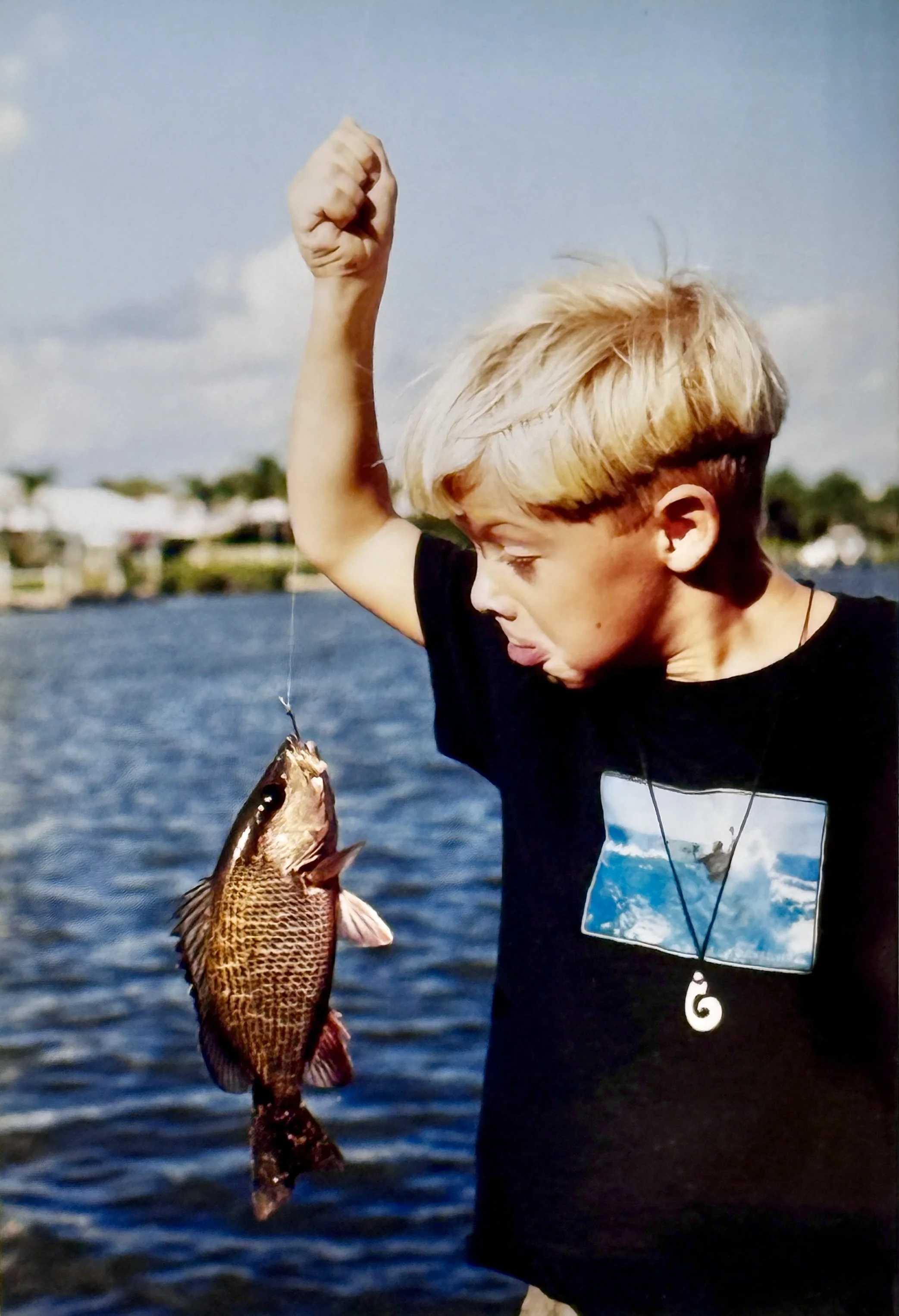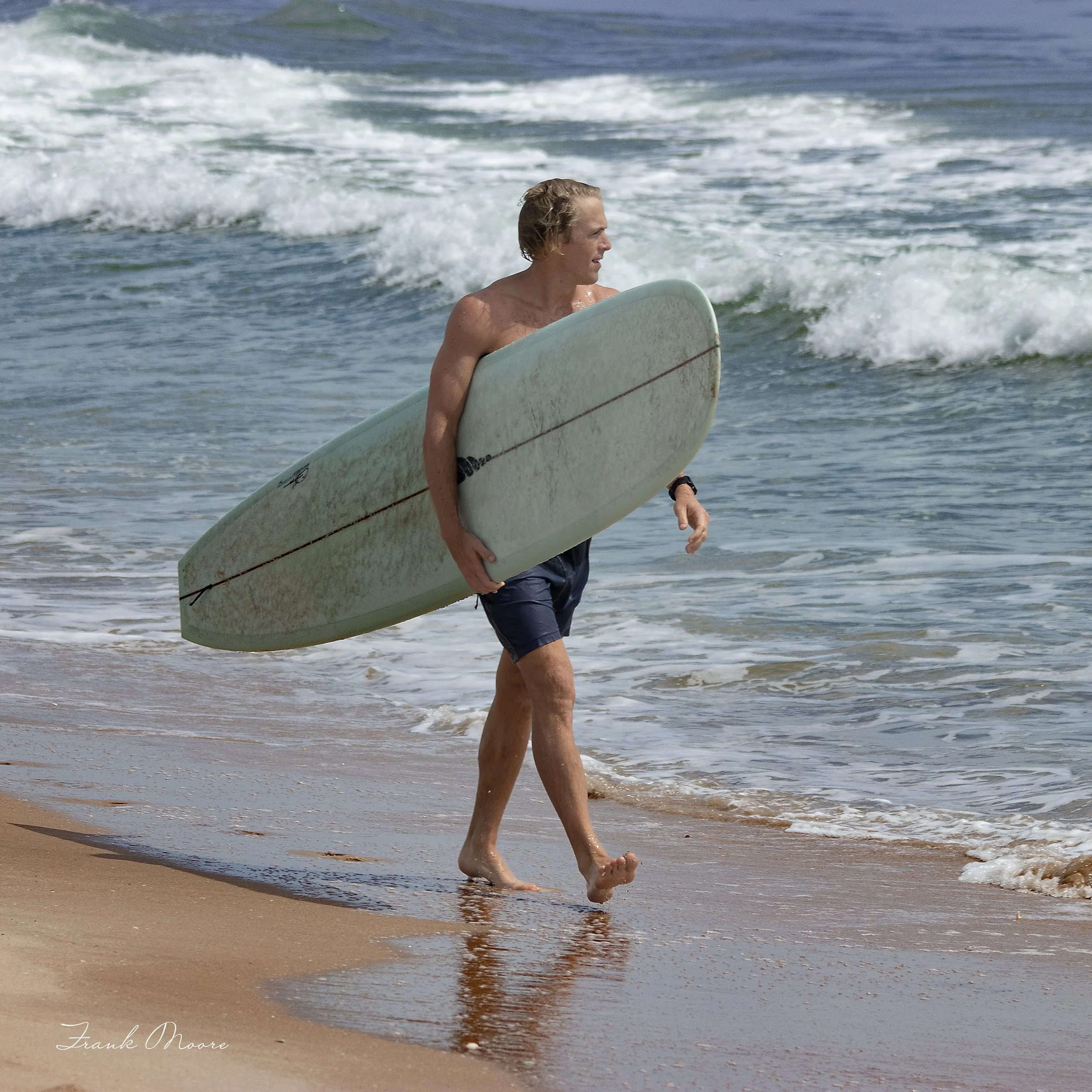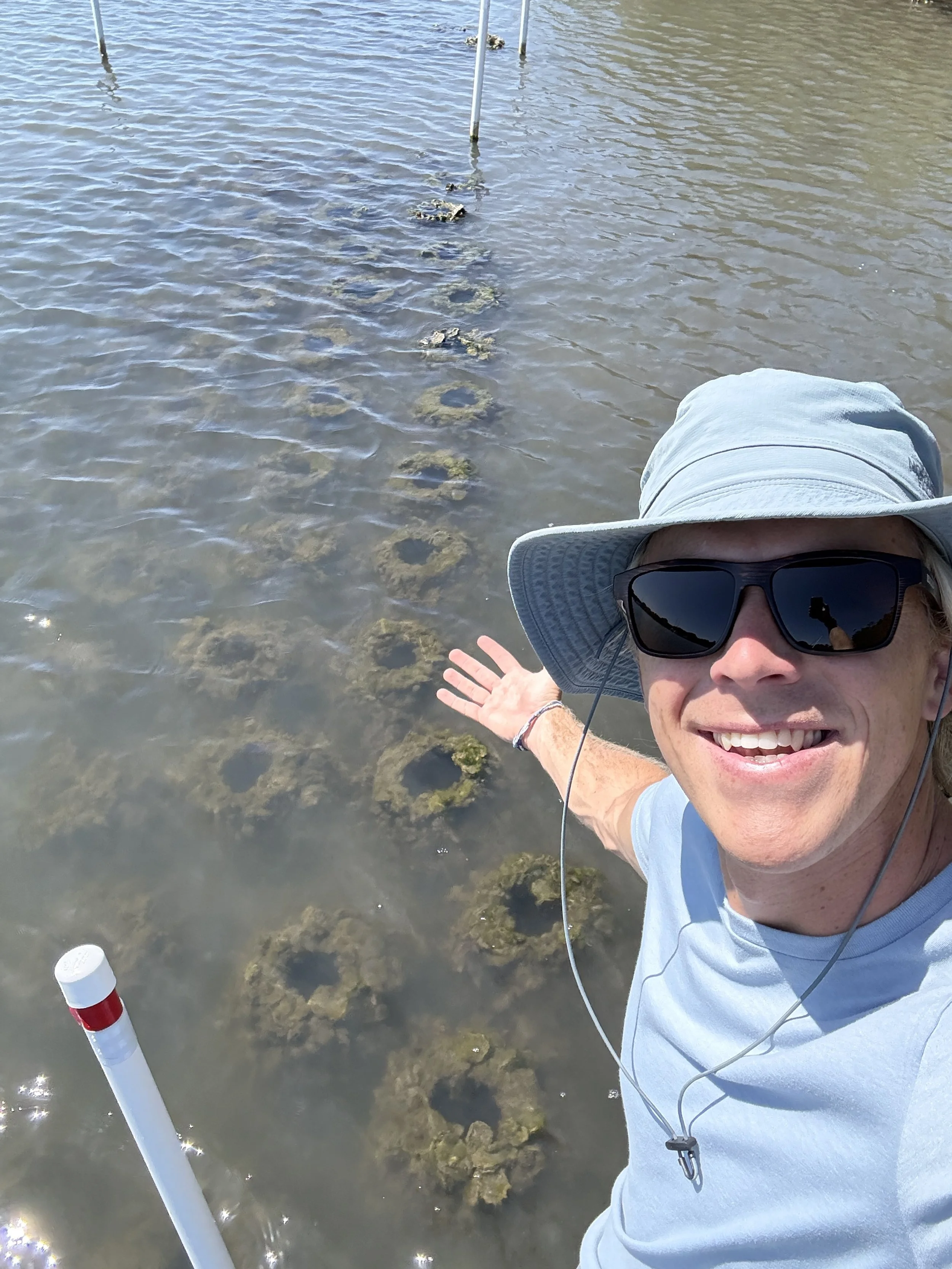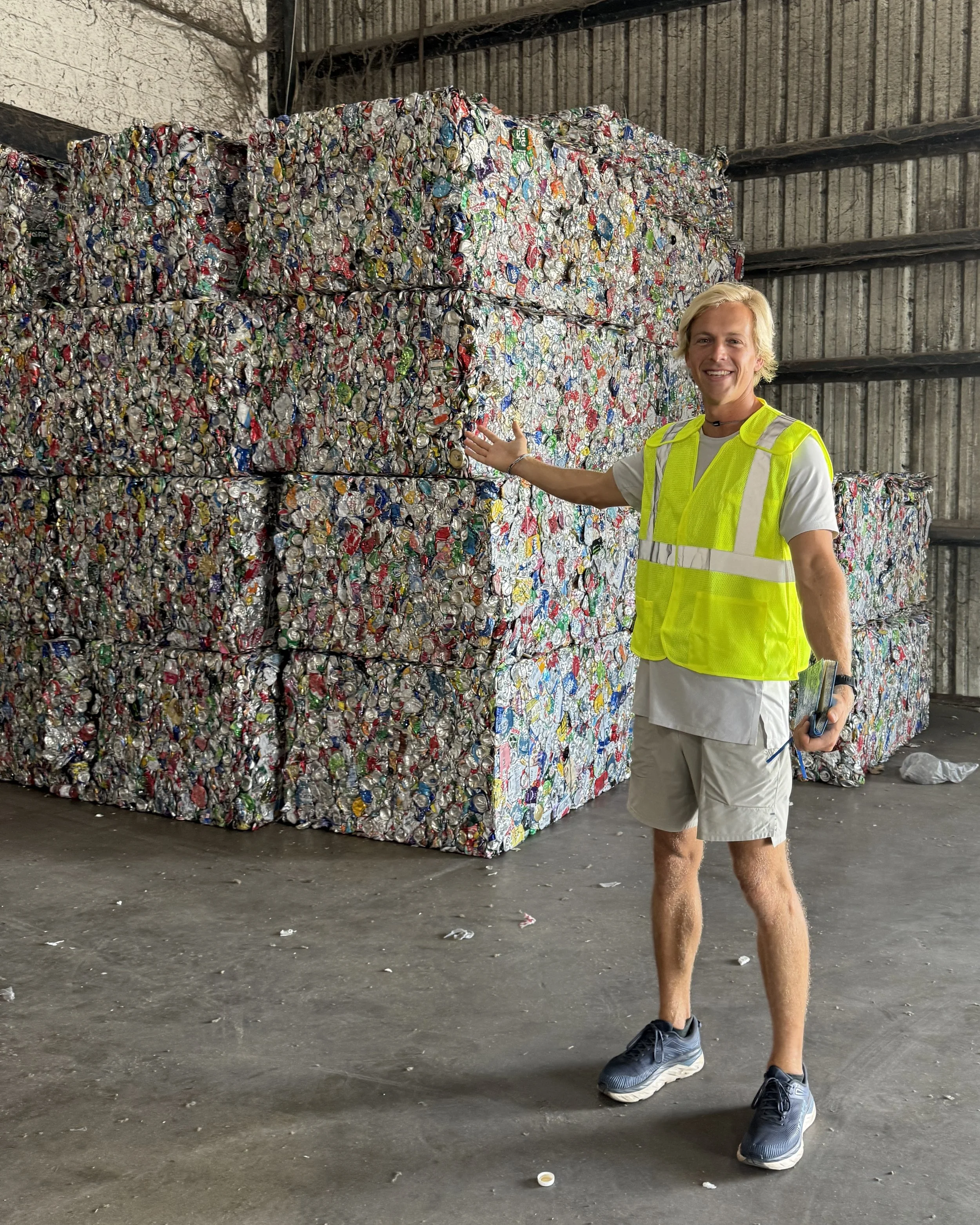
DON’T JUST
LIVE HERE
STAND 4 BETTER WATER
Hi, I’m Max
I grew up right here in Vero Beach. Little bowl-cut beach kid, probably with half a bag of Cheetos dust on my face at any given time, just trying to catch waves with my cousins and avoid wiping out in front of the older surfers.
Back then, I’d see trash washed up on the sand – beer cans, plastic forks, the usual suspects – but I didn’t think much of it. I mean, I was nine years old when I started surfing, and all I was focused on was emulating Kelly Slater, a.k.a. the GOAT of surfing.
But as I got older, reality started creeping in...
I remember hopping off the boat into the Indian River Lagoon, which we called “The River,” and back then, the seagrass was so thick and healthy it almost spooked you to walk through. You just knew there were fish, stingrays, crabs… life everywhere under your feet. Nowadays, some of those same spots don’t have a single blade of seagrass left. Just muck. Muck that squeezes between your toes and makes everyone pull that same face – the “Ew, what the heck is this?” face.
And that’s the thing about growing up here. You don’t just see the changes. You feel them. You smell them. You hear old-timers – folks who’ve been fishing these waters for fifty, sixty years – tell you stories about how the lagoon used to be crystal clear with white sandy bottoms, not just near the inlets but all over. And they’re telling the truth.
One of my favorite scientists, Dr. John Trefrey, collected a sample by inserting a large tube into the floor of the lagoon. The first couple of feet were muck, but below that? Pure, pearly white sand. It’s still there. And I believe we can bring that beautiful sand back to the top, like the way it was.
But I’ll be straight with you: I’m not a scientist. I’m not a marine biologist, a politician, or a lawyer. I’m just a surfer kid from Vero who built a 100+ person marketing company and realized I can use those skills to do something that actually matters around here.
Because the more I learned, the clearer it became:
Our water problems
are people problems.
I started noticing it more on the reefs where we’d go lobstering or spearfishing. Spots that used to be teeming with snapper and spiny lobsters the size of your forearm are now less populated. The reef structure is still there, but the life is struggling.
And then there’s the lagoon.
I can still feel muck squeezing between my toes. It’s the same muck that’s suffocating what used to be seagrass meadows stretching as far as you could see. And it’s wild how quickly people forget – or maybe they just never knew – that the Indian River Lagoon wasn’t always a brown, murky mess. We’ve buried all that beauty under decades of muck.
Now here’s the thing that pisses me off the most:
We did this.
But if we did it, we can fix it.
Marketing taught me one big lesson:
If you don’t know your most important data points, you’re just another loudmouth with an opinion.
So I did what I know how to do best. I learned. I listened. I got my feet wet (literally) installing artificial reefs, cleaning up beaches, sitting through every environmental meeting I could find, and obtaining my Florida Master Naturalist certification in Coastal Systems. Not because I wanted to put it on my LinkedIn, but because I wanted to understand how to implement real solutions.
And what I found was both horrifying… and hilarious.
Since our water problems are people problems, what exactly are we doing that harms our waters the most?
First, trash is everywhere – it’s across our beaches, floating in our lagoon, tangled in our mangroves, stuck in our reefs, and even inside the fish we like to eat.
“Mmmmm, microplastics!” – Said no one ever.
Here are some trash stats from the NOAA that will blow your mind:
If a plastic bottle isn’t put in the recycling bin, it takes 450 years for that bottle to decompose…
Fishing line left on the beach or in the mangroves? 600 years…
Plastic grocery bag? 20 years…
Beer or soda can? 200…
200 freakin’ years, y’all!
200 years ago, we didn’t have airplanes… we didn’t have telephones… we didn’t even have a single sewing machine on planet Earth.
If we don’t get smart about our trash, it will compound in our environment for a long, long time.
Since trash was already our “obvious” enemy, let’s spotlight three invisible threats hiding right in our backyards. I call these…
THE 3 BACKYARD BOMBS
First, let’s talk about poop. Yes, I just said poop.
And I’m talking specifically about your septic tank. Your home’s old poop system could be leaking waste into the lagoon where your kids swim and your grandkids want to catch their first fish.
That’s why S.T.E.P. systems exist. I’m not gonna lie and say swapping out your septic is the sexiest upgrade you’ll ever do, but it’s one of the most important if you want to pass down clean water to your family’s next generation.
Now, let’s stay on the poop train for a minute.
Our beloved dogs contribute over 100 tons of poop into our watershed each day. Yeah, you read that right – each DAY (source: SFWMD). That’s heavier than a Boeing C-32A military aircraft full of hot, steamy dumps landing right in our environment… Every. Single. Day.
And I say this with empathy – I’ve got two dogs myself, so I’m dealing with double the daily dumps.
But poop’s only half the problem.
The next Backyard Bomb comes from your grass.
Most fertilizers are terrible for our waters. They’re high in phosphorus and nitrogen – the two things fueling algae blooms that kill off our fish, suffocate seagrass, and turn our gorgeous lagoon into a murky mess.
And even if you’re not fertilizing, grass itself causes problems. When grass clippings get into the lagoon, they spike nitrogen by 31% and phosphorus by 89% within just ONE DAY (Source: Florida State University, FCRC Consensus Center).
You might be thinking, “Well, I don’t live on the water, so that’s not my problem.” Hate to break it to ya, but it is. All those canals and storm drains around town? They carry fertilizer and grass runoff from properties far inland directly into our waterways. And even if your canal has a treatment system, only some of those nutrients get stopped. The rest flows right into the lagoon.
This means that we have to stop the problemat the source– your yard.
That’s why I started an Eco-Friendly Property Management Team. We’ll clean your yard of dog poop so you don’t have to deal with it, and we’ll cut and grow your grass in a way that doesn’t harm our waters.
And yeah, I know – starting a poop-n-grass-cleanup team wasn’t exactly on my childhood dream board. But when you love the place you call home, you do whatever it takes to save it. Some of our solutions stop the problems. Others scale the impact. Either way, I’m building a movement to do both, and I’d love for you to be a part of it.
Just like fixing a hole in a sinking boat isn’t enough – you still have to bail out the water – once we’ve stopped the problems in your backyard, we also need to clean the water that’s already been polluted.
If you want to see our waters improve but don’t have the time to volunteer, don’t just throw your money at a random cause that sounds half-decent. Instead, invest in a specific solution that directly improves our waters.
For example, with our At-Home Oyster Bars, you can turn all that empty space under your dock into a water-cleansing system that cleans thousands of gallons of water every single day. It’s fast and easy to set up – we’ll even set it up for you, so you can sit back and know you’re giving back to the lagoon every single day.
And for your business, we have a dollar-for-trash match. Every hundred dollars you give, we remove a hundred pieces of trash from our local waterways. It’s a direct, scalable way to make your impact locally, and yes – your business gets recognition for every pound of trash it helps pull out of our waters.
Let’s take a big step back…
We can’t ignore this. We can’t just hope for some massive political change to sweep in. We can’t keep inching forward with outdated tactics. And we sure as heck can’t guilt people into action with doom-and-gloom headlines. That only creates what I call the “turtle effect” – everyone hides in their shells and hopes someone else saves the day.
This is our home, where our kids and wildlife want to thrive, and it’s our job to do what we can – NOW.
Here’s the truth: Vero is different.
Vero is a community of smart people with big hearts. People who aren’t afraid to put their money to work, get their hands dirty, and create real change for our community.
And if you’re reading this and even just a tiny part of you is fired up, then join us.
We’ve got a plan and we’re building momentum, but we need your help.
The time is now to stop the problems and scale the solutions.

First,
Consider joining our 4 Better Water email list, where we…
Share updates on the health of our beaches, lagoon, and reef…
Highlight Local Legends who go above & beyond for our community…
Feature the best photos and videos of local nature…
And if you absolutely hate it, you can unsubscribe anytime ;)













